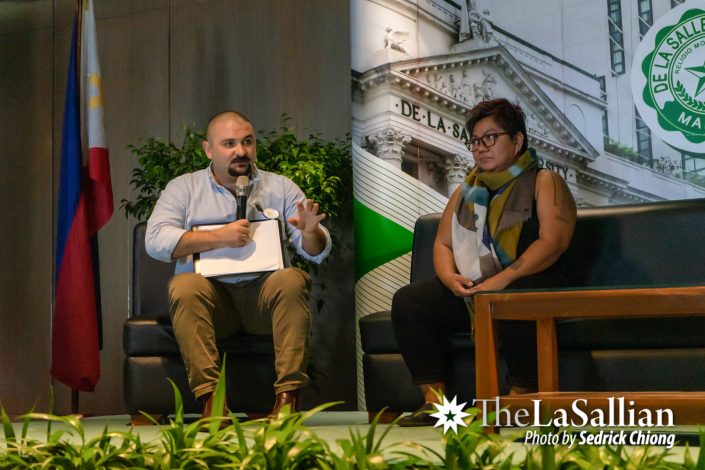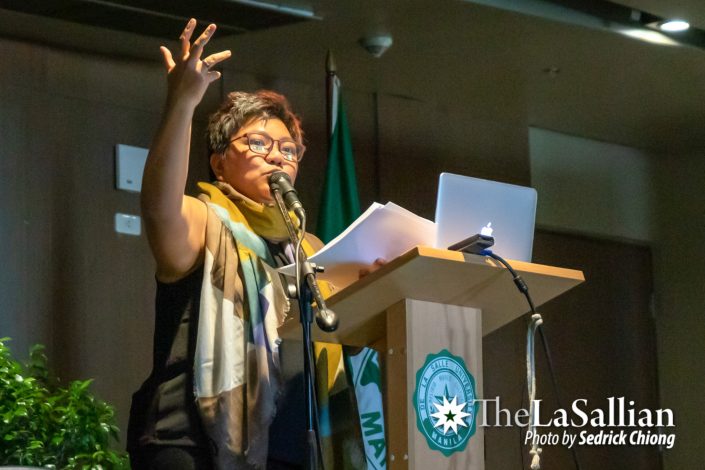First convened in 2013, the second rendition of Pagtitipon, entitled Tropical Performances: The Second Performance Studies Philippines Conference, was held at The Verdure, fifth floor of the Henry Sy Sr. Hall last August 5 and 6 to commemorate performing arts as a versatile form of expression and a paramount avenue for cultural preservation in the tropics.
Overseen by the Literature Department, the event featured performances in a tropical context, from the dances of the Republic of Kiribati to the annual Adow ne Domaget (Dumagat Day) festival, where people of the Aurora province celebrate their cultural heritage and community solidarity.

Fresh analysis on tropical performances
The delegates welcomed Dr. Paul Rae, Associate Professor of the University of Melbourne, as the keynote speaker for the first day of the event. Rae discussed his paper Dancing Tropical Life: Local Dance in Kiribati, which centered around the ways traditional dance expresses the geographical culture of the people of Kiribati, including remarkable dance competitions held by the natives of South Tarawa.
The exchange was followed by parallel sessions hosted simultaneously by speakers from different fields of performance studies. Among them was acclaimed painter and visual artist Lyra Garcellano, who tackled Performing in Tropics with fellow panelists, highlighting Garcellano’s two-channel video Tropical Loop.
Meanwhile, Jen Hao Walter Tsu from the National Sun Yat-sen University in Taiwan sampled two works of Taiwanese theater. Tsu also delved into the politics incorporated within Taiwanese metaphors and poetry, superimposing them against issues such as Taiwan’s New Southbound Policy, an exchange program which sponsors visits to countries in South Asia, Southeast Asia, and Australia to strengthen their relations with the region and lessen their dependence on China.
The final set of panelists articulated the discussion about theater arts. Entitled Seeding the Future: Creativity, Collaboration, and Capability in Performing Arts – Part 1, the panel viewed theater as a way to “create a network of motivated communities.” De La Salle-College of Saint Benilde (DLS-CSB) Theater Arts Chairperson Magdalena De Leon and Anne Balgos of DLSU’s Literature Department relayed how providing theater workshops to students in underprivileged La Salle schools could help establish a strong foundation of community engagement.
Agnes Manalo from the Music Production Department of DLS-CSB, on the other hand, discussed how mundane objects can be used as materials for performance. Shortly after, Balgos and theater educator Armando Rutaquio presented Layeta Bucoy’s Sa Isang Tingin to help shape their discussion on multimodality and intermediality in theater production.

Claim their culture
Roselle Pineda from the University of the Philippines Diliman Art Studies Department and Dr. Felipe Cervera from LASALLE College of the Arts in Singapore graced the second day of the event.
Cervera briefly tackled the existing frameworks of performance studies in the regions of Mexico and its effects in addressing tropical sovereignty. He discussed its relation to the concept of “muxe”—a person who dresses and behaves in the opposite gender. Among them is Lukas Avendaño, a Zapotec muxe contemporary performer.
Avendaño expressed his critique of the Mexican nation state’s mistreatment of its indigenous communities during the The Bogotá Declaration of 1976, where Latin American countries banded together to assert their rights over their resources.
Tackling the importance of performance art in ethnic identification, Pineda also emphasized how Adow ne Domaget aided in the struggles of tropical indigenous tribes against oppression. “The festival became an embodied and powerful resistance against attempts to control through institutional ethnicity,” she shared.
Both Cervera and Pineda stressed how performance art can become an avenue for indigenous natives to express their disapproval against their government claiming their sovereignty. Pineda pressed the audience to recognize and understand the “power of the lived experience” of cultural identification and its ability to open “new and bold forms of engaged resistances” that trouble vulnerable communities such as the indigenous tribes in Dingalan.
The first plenary panel focused its theme on saving and understanding rivers, an overarching element of tropical life. Dr. Genevieve Asenjo of the DLSU Literature Department presented her paper on the stories of the Pan-ay and Jalaur Rivers, which flow through the island of Panay. She highlighted the power of literature to engage people in the appreciation and conservation of rivers.
After Asenjo’s talk were a series of parallel sessions which further expanded on tropical themes. Panels on Music cultures and the use of Heritage rice; trees and storybooks; and Lenten Rituals in Tropical performance practices took the spotlight.
The conference closed with a plenary panel of theater art scholars from across the archipelago giving their reports on the state of performing arts in the country.
“This is the site that we (the people) should create,” Pineda asserted. Emphasizing a community’s determination and openness to continue their own culture, she hoped for a future open for cultural development—a future where culture can still thrive.
With reports from Bea Francia and Helen Saudi
